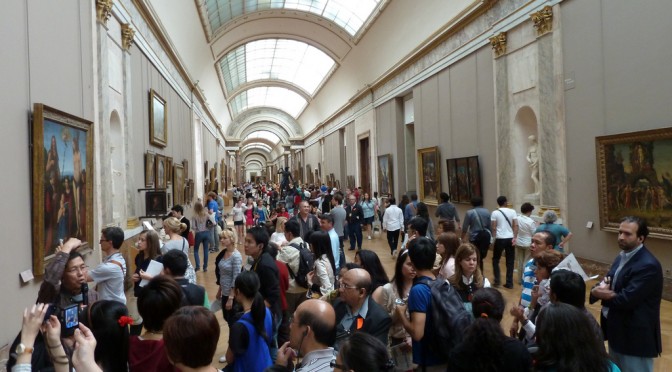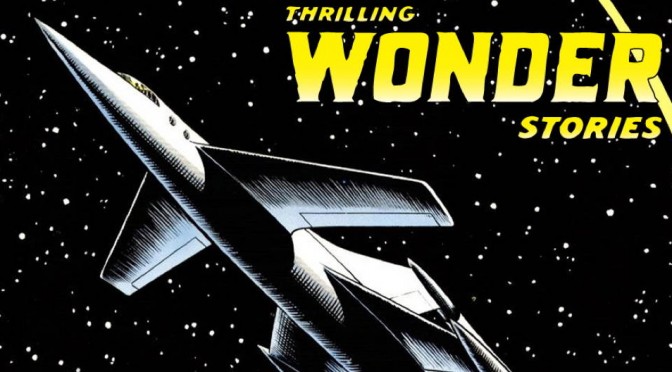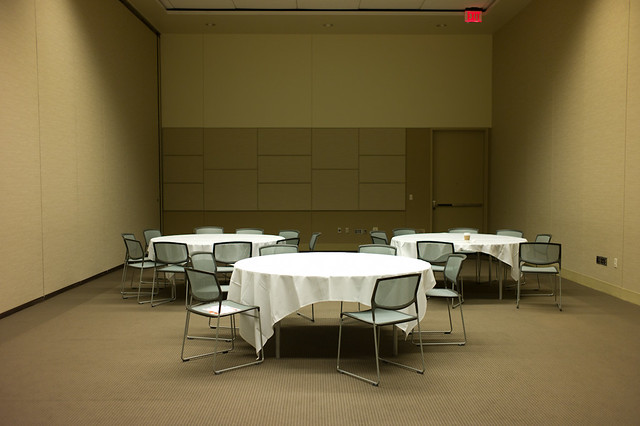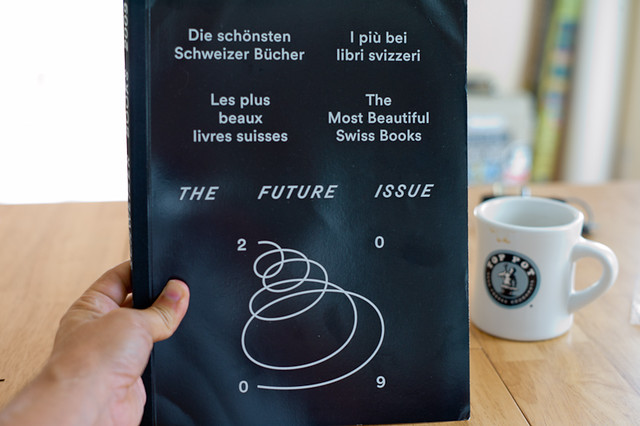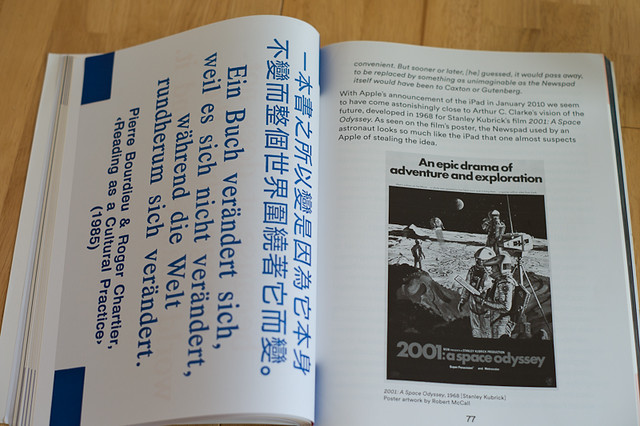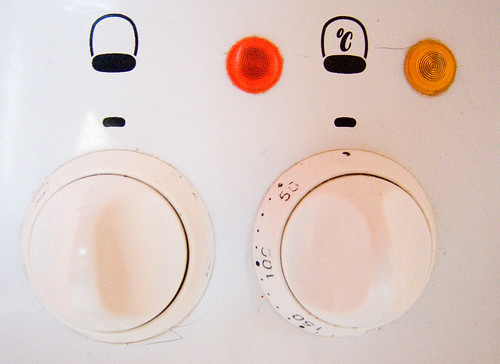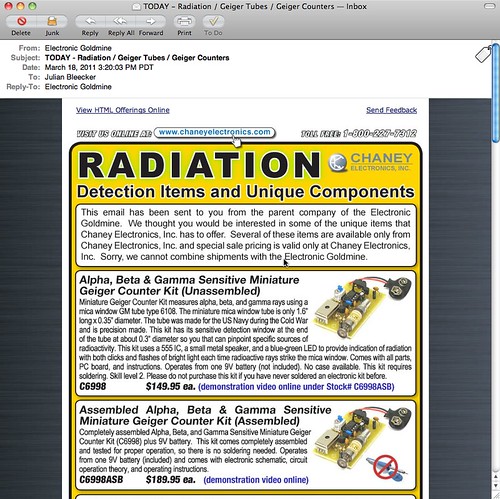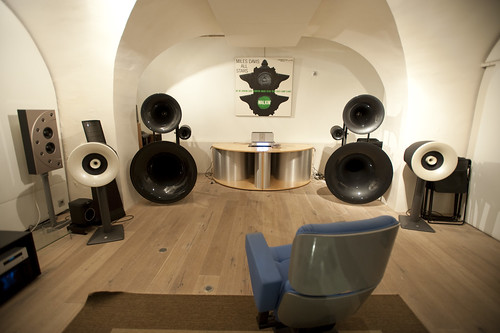Here in Barcelona, we continue fine tuning Quadrigram, with now a meticulous work on the coherence of pre-programmed modules the tool will provide to access, manipulate and visualize data flows. It also means some backstage cleaning and improvements of the engine that supports the visual programming language.
We have also been busy joining forces with our new friends at the user experience & data visualization studio Interactive Things. They have been mandated to produce visualization mobile phone network traffic and we do our best to provide the cleanest and more meaningful pieces of data. Their magic will be presented at Lift 12.
In the meantime, Yuji Yoshimura traveled to Helsingborg, Sweden to present at ENTER2012 a study of the visiting experiences at the Louvre Museum. His paper New tools for studying visitor behaviors in museums: a case study at the Louvre is the result of a collaboration between Universitat Pompeu Fabra, MIT SENSEable City Lab and us. It builds on the data we collected in 2010 to measure hyper-congestion phenomena in the busiest areas of the Louvre.
In Geneva, the week was focused on various projects. It was the last week of teaching at HEAD-Geneva this semester. Last Monday, I gave a course about innovation and usages and another one about design ethnography (which was actually made of students presentation). Tuesday was devoted to meetings in Saint Etienne (France) at Cité du Design, a quite big Design Center located in an old and beautiful manufacture. Then I (Nicolas) gave a presentation there about human-robots interaction (slides are on Slideshare). The rest of the week was spent in meetings with Lift speakers, students (time to discuss their masters thesis!) and watching video material for the current field study about head-mounted displays. The end of this project is pretty soon and we are currently working on the final presentation for the client.
In Los Angeles, Julian was a busy-bee trying to get PCB’s fabricated for the Ear Freshener’s
WONDER STORIES 3 Created by In Association with the Architectural Association, Studio-X NYC, Popular Science We have always regaled ourselves with speculative stories of a day yet to come. In these polemic visions we furnish the fictional spaces of tomorrow with objects and ideas that at the same time chronicle the contradictions, inconsistencies, flaws and frailties of the everyday. Slipping suggestively between the real and the imagined these narratives offer a distanced view from which to survey the consequences of various social, environmental and technological scenarios. Wonder Stories chronicles such tales in a sci fi storytelling jam with musical interludes, live demonstrations and illustrious speakers from the fields of science, art and technology presenting their visions of the near future. Join our ensemble of mad scientists, literary astronauts, design mystics, graphic cowboys, mavericks, visionaries and luminaries for an evening of wondrous possibilities and dark cautionary tales. For the first time, Wonder Stories will be simultaneously hosted in London and New York and Popular Science will join the Architectural Association and Studio X NYC in coordinating the event this year. Join us for the third event in the series as we chart a course from science fiction to science fact with talks, a hands on taxidermy workshop, animatronic guests, swarm robotics demonstrations, datascapes walking tour and live movie soundscapes. Free to all. OCT 28 1200 – 2200 at the Architectural Association London and OCT 28/29 at Studio-X NYC The event will be streamed live streamed here and you can follow the twitter feed with #tws3 Hosted by VINCENZO NATALI BRUCE STERLING KEVIN SLAVIN ANDY LOCKLEY PHILIP BEESLEY CHRISTIAN LORENZ SCHEURER JULIAN BLEECKER CHARLIE TUESDAY GATES DR RODERICH GROSS AND THE ‘NATURAL ROBOTICS LAB’ GAVIN ROTHERY GUSTAV HOEGEN SPOV ZELIG SOUND RADIOPHONIC Hosted by BJARKE INGELS NICHOLAS DE MONCHAUX HARI KUNZRU JAMES FLEMING ANDREW BLUM DAVID BENJAMIN MARC KAUFMAN DEBBIE CHACHRA JACE CLAYTON AND LINDSAY CUFF OF NETTLE CHRIS WOEBKEN SETH FLETCHER SIMONE FERRACINA DAVE GRACER HOD LIPSON ANDREW HESSEL CARLOS OLGUIN [Image credit ‘Inception’ dir. Christopher Nolan] Back in 2010 at the University of Michigan Taubman School’s conference on “The Future of Technology” is where I first started thinking about the future as represented in graphs. I brought this visual graphical prop back again at the AIGA conference this last weekend in Phoenix. I guess I figured that a graphic of the future would be a good way to start a talk of the design professional society that at least started with a strong emphasis on graphic arts. (But it’s broadened itself, as I understand, which is good.) I started with these hand drawn illustrations as a way to show that the future is contestable and malleable and one can make it and need not subscribe to the least-common denominator ideologies about what the future looks like. More than “disruption” — which has weird connotations with business, but just creating a future we imagine, not driven by forces that have typical measures of “future” that includes better battery life and larger screens and more brain-y smart devices. I participated in a discussion on Design and Storytelling. It was a rehash of some existing material on Design Fiction and the various idioms and conventions that Design can learn from science fiction in order to do the work of design — and not just communicate design ideas, but actually *do design. Parenthetically, I’ve only recently become a part of the AIGA and I’m still in a phase of my professionalization in design. I think it’s quite important to understand that being anything in any community means being a part of the community which means circulating oneself — ideas, conversations, listening and learning. It is a way of advancing oneself *and advancing that professional community. This is why I go to these things and why I try my best to be an active part of the conversations and discussions — contributing something in the form of a talk or a workshop. It’s not because I like to travel around. That part is actually hard on the body and the home. But it’s part of what it means to be “advanced” at whatever one does. Advanced Designers who do not Advance Design are just shift workers. And then they’ll come a time when they are obsolete because they never paid attention to the larger advances in their community and one day they’ll have befuddled looks when the generation or two “behind” them comes up and eats their lunch. It should be a formal requirement to participate at these levels, proactively. There’s a three step plan. I describe it here: http://www.nearfuturelaboratory.com/2009/04/29/follow-curiosity-not-careers/ Okay. Rant on Advanced Designers who don’t Advance Design is officially over. Going to these things is hard, fun work — but, then you also learn *new things and meet *new people! One high-note for me was this fellow who I’m sure you all already know about and I may be the last one — Jackob Trollbäck. Here is a designer who I could admire right away as he finds the curious, little weird things full of possibility for expression and experimentation. There were a number of things he showed that were just almost incongruous studies and experiments, much of which was wrapped up in sound and rhythm (also topics of great interest to the laboratory these days) as well as curious visual studies and experiments. These were informal experiments — playing with images and videos from an iPhone that turn a technical failing into an aesthetic marvel. These sorts of unexpected things are very interesting to us here. Also! There was a little bit of a confirmation for my own personal “that’s weird” study — things that happen and one notices them repeatedly. There’s no big theory explanation here, but I notice curious alignments of numbers on clocks — digital clocks. I was capturing them quite regularly and uploading them to a Tumblr. And then I stopped because people would say — no..that’s not weird. It’s just the time. But it seems Jackob Trollbäck has done the same. So — it was a bit of an affirmation of my weird observations. Related, here’s the talk from the University of Michigan where I first showed these hand-drawn sketches of the future. I think there’s a t-shirt in here somewheres.. I had a fun discussion with the folks at this wonderful Australian Radio National’s Future Tense show on the topic of design fiction — “Fictitious futures, virtual development and visual language.” I suppose its a measure of things the degree to which the conversation about the co-mingling of design, science, fiction, fact and technology spreads far and wide — even to discussions in the realm of public radio. It’s tempting to be more actively involved in the practice of these things. Actually — finding the way that even the behind-closed-doors work I do during the day can squeak out into the light of day without ruffling feathers is on the list of things to do..or has been for a couple of years now. Not at all to crow about the work, but to share it because there are learning experiences in there and, frankly — it’s not the kind of work that tips directly into the kinds of back alley gossip about what the titans of industry will do this quarter to make their financial lap dogs pant happily. It’s just great, exciting, thoughtful speculative design work that should be discussed and learned-from — process, outcomes, how-to do speculative design..more the meta-meat that is intriguing rather than the material itself. Continue reading Design Fiction on Australian Radio / FutureTense Thus uttered Antoine Doinel in Truffaut’s film “Stolen Kisses” as a farewell letter to Madame Tabard is shussh-ered off through the Parisian pneumatic tube postal system.. Just enjoyed a coffee and reading Molly Steenson‘s article called Interfacing with the Subterranean on pneumatic tubes infrastructures in Issue 41 of the lovely, always diversely curious Cabinet Magazine. A nice little read on a system we’d now look on as antique, baroque and not just a little bit steampunk-y. That’s her up top sharing with me some of the very intriguing primary research she’s unearthed as she drops-gear and toe-and-heels the turn into the final lap of her dissertation Grand Prix race.
Aside from being still perplexed at how this proto-type internetwork of connected *tubes actually was able to route things hither-and-yon over cities and all such — I find it fascinating that versions of the hardware stack continue to exist in various ways. There are intranets within buildings still. The intriguing aspect of this is the material form that is rhymed (not perhaps on purpose or by design) by the networks electronic of today. Those guys standing around in the rooms receiving and continuing the little chariots of messages are little routers and TCP/IP compliant protocol handlers, one could think. Why do I blog this? To capture a small historical scrapnote on the always constantly prototyping mechanics of communication that humans perform. This was likely perceived as wondrous, high-technology in its day. I’m surrounded this week by the hubris of high-technology prototyping, creation and thinking. Not all of it wondrous. Some of it down-right silly. Words like “engine” and context and gobble-dee-gook engineerig-y semantics make a hash of what the utterer may think of as perfectly reasonable sentence structure and syntax. I can’t tell verbs from nouns when I hear about context engines deciding that I’m in a meeting and little “agents” squirreled away on the chipset in my hand decide to book lunch but not before my chipmunk agent grabs an auctioneers gavel and let my local restaurants bid for he pleasure of my ordering a sandwich. I don’t believe this is an interesting future. There are others. More whimsical. More fun. More pneumatic. In a project we’re currently undertaking that has allowed us to work through and figure out the future of the photo book I was compelled to read through this book called “The Most Beautiful Swiss Books” and the 2009 edition is called “The Future Issue.” I like the play on words there and didn’t see it until just now. The Future Issue. Like..it’s the issue from 2009, because this is an annual. But, the future is an issue to consider. Get it? Well..I didn’t until my coffee took hold. There are a few relevant passages in here on design, the future of reading and publishing and that sort of thing. * Everyone seems to be considering the iPad. This book was published after the iPad was announced but before it was made available. There should be a follow on to the points made in there. Maybe I’ll do that. Follow up with the critics and ask them. There is the usual bulwark, which is to say that there is something about the tangibility and materiality of the book that is precious, seminal and defines book. Something that people would still want. Other points related to iPad-mania were to indicate the distinction between book-dedicated readers like Kindle and platforms like iPad in that there is always something available with the iPad to do other than read, which can pose distractions like..*shrug..why not check email now? There was some excitement about the evolution of book design in the pad-electronic form. What compliments and extends paper, pages, binding and all that. * And then there was the wonderful canonical reference to 2001 – A Space Odyssey * Mention was made to Wim Wenders seeking opinion on the extinction of movies in the context of the intrusion of television. Would books suffer the same fate as movies did when television appeared? * Perhaps the most vibrant short essay questioned the phrase The future of. Something called “Experimental Jetset” — a collective of Graphic Designers in Amsterdam wrote that they dislike the three words “The future of..” saying they find “something about the phrase that completely puts us off.” What bothers us most is the suggestion that the future is an unchangeable entity, something that develops completely independent of ourselves. A pre-determined path, to which we should adapt ourselves, whether we like it or not.. ‘Our future’, is something that is manageable, shapeable, changeable, buildable, doable. ‘A future’ sounds pretty decent as well. A plural ‘the futures’? Why not? Just as long as we can get rid of the idea of the future as something that governs us, like some kind of pre-modern deity. Let us be reckless about it: we govern the future, not the other way around. Perhaps this is the most encouraging perspective in the essays of the book, tucked neatly in near obscurity amongst the two other possible opinions: (1) veiled conceit for the iPad/nostalgic death-grip on the smell of leather, the artisinal bookbinders craft, &c.; (2) curious exuberance for this evolution in the rituals of reading. Why do I blog this? Notes on opinions about the evolution of book writing, making and the cultural evolutions of reading and publishing practices. Plus the bonus design fiction chronicle on the iPad in 2001! I wonder about the various settings and contexts used to re-imagine what the world might be like in the future. Often times those contexts, objects, environments are associated with what wealthy people would like for themselves in order to drive sales of new stuff. This is understandable in a mostly capitalist world, of course. Often times one finds rather naive, un-encumbers, un-troubled extrapolations of desires or behaviors for and within these spaces of human endeavor (the car, the bathroom, the workspace/place, the kitchen) based on somewhat awkward and thin assumptions about what the world will be like, and what people want from these spaces. The kitchen is such a place where sometimes wacky ideas about the evolution of behaviors in these spaces tips into the absurd — like 3D printed food in a world where people seem to be enjoying the visceral world of preparation and chopping and stewing and all that. The kitchen is a place where just making simple things just a little bit better seems the best path toward the near future — such as no microwave nagging beeps; refrigerators that are smart enough to either be told (with a *button, not a context sensor) that, yes..the door is open..its open because I’m loading the goddamn groceries..no need to beep at me). Big change — those things should be consistent with the real, global, epic-scale challenges to living in the near future world — which have nothing to do with a refrigerator that lets you know you need more damn milk. I mean..really? Why does that get to be the enginerds scenario for a better kitchen? *Sigh. I recently found this Ikea’s Kitchen of the Future and it made me think of a number of topics related to imagining the future. Firstly, it is worth considering why the typical western kitchen becomes the subject for future fictioning. Why imagine the future of the kitchen, practically thinking? Is this going to save the world from itself? Well — perhaps it could and that actually would be a fantastic design project — reconsider the kitchen in light of (and then list your parameters having to do with ecological collapse/civil liberty infractions/pro-democracy uprising/emergency water rationing/$12 a gallon heating fuel/&c.) But, as for the kitchen that Ikea imagines, I suppose there are a number of reasons why the kitchen is a seductive setting for setting the components of the future. These probably have to do with perhaps the fact that the kitchen in the West is quite modular and therefore subject to study of the various individual components — refrigerator, cabinets, dishwasher, sink, stove, oven, etc. The kitchen also has a history of reconsideration in this regard if you consider things such as the Frankfurt Kitchen. Such was a purposeful, design-principle led modernization in the height of, you know — modernism. It was designed to be as efficient as possible in a small space using very modern “workflow study” techniques. This meant that it was designed for specific flows of activity, like a factory in a way. This idea of every-increasing efficiency would be consistent with the Jetson’s kitchen from the old fantastic cartoon. Maximum efficiency — just select what you would like using a physical paper punch-card and it gets issued from the machine (complete with consistently type-faced names for the items.) In my anecdotal experience and without any exhaustive survey or study — it seems to me that, despite predictions there is quite a move back towards more “artisinal” (*shudder) kitchen activities. Rather than anything indicating that machines will 3D print our food, the craft of cooking appears to be alive and well as indicated by such things as celebrity chef restaurants, a never ending stream of cooking shows on television, various food movements/philosophies that desire a deeper, conscientious connection to the food chain (where has the veggie/beast come from? how was it fertilized/fed?), &c. I think this example of the Ikea kitchen also embodies the challenges of future-fying anything well. Too much fetish of the object and very specific, naive and — old fashioned — ideas about what people want in the future. ((Isn’t that ironic.)) Why do I blog this? I’m trying to tap into the various parameters by which the future is really crappily represented in models and speculations and scenarios. I think one component of this has to do with an over-emphasis on the artifcats themselves — making faster things, or smaller things, or more silver-y or white things, or 3D food printers because, like..3D and printing are a Wired Magazine meme, or other poorly considered reasons. ((Meanwhile, I would be satisfied with making whoever invented the microwave beep-beep-beep-beep to indicate the timer has expired to have to listen to beeping forever..in perpetuity..until their earballs explode.)) I understand that the Ikea thing is more marketing puff than proper, considered design and it drives me nuts that entities with the ability to bring about real, substantive change in the world bother to spend their money with this crap that’ll just be torn down after the annual investors meeting or the stupid trade show is over. While the kitchen may not be terribly exciting to me specifically (perhaps because of these speculations that ruin the excitement of really making a better more habitable future) everyone has to eat, and those eat’ns need to be prepared — and finding new ways to do that preparation in the near future should be taken seriously without pandering to the whims of deliriously rich people who can afford to redo their kitchen every other year. There should be a kind of agency or consultancy that looks at this sort of thing seriously and re-imagines the near future of the kitchen using principle-led design and maybe even design fiction techniques. Completely understandable how the recent tragic events in Japan would translate into email from an electronics source containing *only parts and supplies and modules to make Geiger Counters. At the same time as it’s understandable, it’s one of those things that feels like it’s taking advantage of the general panic, confusion, sadness and apocalyptic angst. Not deflecting the urgency and anxiety of recent events in Japan, it’s curious to me to think about how and when change is able to happen. By that I mean that things happen, swerve off-course or are able to swerve off of into unexpected, new directions. For example, the events after 9/11 where an *opportunity space opened up in which dramatic, unprecedented changes were able to be made in the legal systems of some countries. Things that would not have been so easy to implement had their been no epic tragedy. Similarly, in a way — now we learn quite a bit about nuclear physics, science, speculation about the malfeasance (if you can call it that) of this nuclear quasi-agency in Japan (via @xenijardin WSJ: TEPCO initially resisted using seawater to cool reactors; harm to “valuable power assets” feared ). We find ourselves preparing — again — for an earthquake, nuclear catastrophe, flood, Tsunami, etc. Entirely enormous nations are scaling back and turning off nuclear power plants (I find this most intriguing) and rethinking their energy policies. I mean — that’s epic. Whatever side you may be on the issue of nuclear power, these events, at the cost of untold lives, future lives, physical infrastructure, and so on — everything has been changed. The imagined course into which the future was going to be made, has swerved. We often like to think of change coming about from good, thoughtful, happy actions and activities. Like good design work, for example. I think, from my experience, it is often never like this. It is hard. Change is hard. Making things better is hard. Generally, and anecdotally from the experience of myself and others up and down the hall here on the 7th floor of the Laboratory — people are reluctant to change their ways, the course of their lives. Moving out of “comfort zones” and all that is, well — uncomfortable. Adapting and adopting new ways of living, behaving, thinking would make for a more resilient world, I think. One that was not afraid of difference, of giving things up for the hope and possibility of a better things. Of course — it can all go wrong. But at least we’d try. *Anyway.. Parenthetically, Studio 360 has an intriguing related radio story on this topic. It is called Japan: The Imagination of Disaster. Why do I blog this? As always, we here are quite intrigued by how the future comes to be — what are the mechanics, semantics and motivations that move people to obtain and create possible futures. In this case, “taking advangage” of opportunites when one can do that bit of swerving, rudder-pushing, tiller cranking because the currents become favorable to try a new tack. This is really exciting to me. It feels like there is serious ((i.e. people with degrees who gather at conferences and congresses and use words like R&D)) comprehension of the way that science-fiction is a kind of science-fact, and science-fact is a kind of science-fiction. In fact, the two are one and the same and the categorization is mostly useful to bookstores who need to divvy up what goes where. There’s an incredibly rich view of the creation and materialization of new ideas if you disallow the hard distinctions. Honestly. It’s not insurgent view; it’s an innovative view. Seeing these kinds of cross-overs and crosstalk and the blurring-of-lines ((as should be the case, I believe — for the good of the whole smash)) makes me want to go to something like this, even after swearing off of this sort of specialist conference. It’s at least worth looking at this Creative Science Foundation ((big sounding puff there)) the “brain-child” of an intriguing Futurist ((how artisinal)) called Brian David Johnson which has a few links to some intriguing activities and work, including this Morrow Project that Intel ran where they got some writers to write about life in the future. ============ 1st Call For Papers 2nd International Workshop on Creative Science (CS’11) Sponsored by Intel & Published by IOS Press Held in conjunction with The 7th International Conference on Intelligent Environments (IE’11) Nottingham, UK. 25th-26th of July 2011 Background and Goals: This international workshop will explore the use of science fiction as a means to motivate and direct research into new technologies and consumer products. It does this by creating science fiction stories grounded in current science and engineering research that are written for the explicit purpose of acting as prototypes for people to explore a wide variety of futures. These ‘prototypes’ can be created by scientists and engineers to stretch their work or by, for example, writers, school children and members of the public to influence the work of researchers. The outcomes of these interactions are then fed back, to shape the science research and outputs. In this way science fiction prototypes act as a way of involving the widest section of the population in determining the science research agenda, thereby making science investment, and science output more useful to everyone ranging from companies, through scientists and engineers to the public, consumers and the government that indirectly fund R&D. In this way fictional prototypes provide a powerful interdisciplinary tool to enhance the traditional practices of research, design and market research. The goals of the workshop are to act as a catalyst of this new approach by acting as a forum where researchers from differing disciplines (notably science fact and science fiction) can come together to explore how to develop this area. Participation: You are cordially invited to participate to the workshop either as a presenter or as someone simply wishing to learn more about this topic and, perhaps, join the discussion as a member of the audience. Participation is possible either by attending the workshop in person, or by participating via the Internet. For presenters (science researchers or writers) we are looking for short imaginative fictional stories (prototypes) of no more than 12 pages (and presentations of 20 minutes) based on recent scientific publications, which would act as motivation (or discussion) or how science research might be directed. Your fictional stories (prototypes) should include a short discussion (no more than 2 pages) of your published work (and how they relate to your story, including references to your work). The fictional stories (prototypes) should conclude with a short summary (half to one page, say) that provides an overall comment on your effort to use your fictional prototype as a means to motivate your future work. References should be included at the end of the paper. All fictional stories (prototypes) accepted will be published by IOS Press. Thanks to Intel’s generous sponsorship we will pay the workshop registration costs for the 10 best Science Fiction Prototype (SFP) stories, as judged by the reviewing committee. In addition, a Samsung P1000 Galaxy Tab (eg ARM Cortex A8 1GHz, 16GB, 7 inch TFT LCD, 3G, BT 3.0, Android 2.2) will be awarded to the writer of the best Science Fiction Prototype. Workshop Structure: The workshop will comprise a single day event and will include: The Venue: CS’11 will run in conjunction with IE’11 at Nottingham in the heart of England and a popular tourist destination attracting an estimated 1.3 million visitors annually. Many visitors are attracted by Nottingham’s nightlife, its history, the legend of Robin Hood, Sherwood Forest and popular history-based tourist attractions including Nottingham Castle. More details are given on the IE11 web pages . Important dates: Workshop Fees: Workshop Organisers: Continue reading Science Fiction Prototyping for Technology Innovation Seems Art Center’s Media Design Program has extended its deadline for applicants for a summer residency — learning and pervasive/ubiquitous/thing-y computing. http://www.artcenter.edu/mdp/research/summer2011/ === We are particularly interested in projects that explore learning in a context of pervasive computing, including mobile technologies, social networking, online systems and digital media. We will consider projects for all learning situations but are most interested in post-secondary art and design education, as an extension of our New Ecology of Things initiative. This unique context is best for research that incorporates design and prototyping as a mode of inquiry. Outcomes may include working prototypes, speculative visions, new pedagogical models and new learning contexts. The project may consider the full spectrum of pervasive computing’s role, from additions to the traditional studio classroom, to supplemental learning outside of the classroom, to distance learning with a teacher, to completely self-directed learning. Since the project is focused on pervasive computing, traditional browser-based online learning systems should not be central to the project. * How do the tangible interactions enabled by pervasive computing change the potentials of eLearning for art and design students who are learning how to make physical artifacts? * How might art/design critique be affected by the use of pervasive computing? * What role might tablets, smart phones, sensors, or actuators play in learning? * What role might social networking play in new learning systems integrated with ubiquitous computing? * How might contemporary educational practices such as project-based learning and collaborative learning change in a context of pervasive computing? * What role might tangible interaction play in education for non-artifact-based design such as that for experiences, plans, and systems? Continue reading Art Center Summer Residency: Learning and the New Ecology of ThingsThrilling Wonder Stories..London Edition
Live in London and New York Oct 28th
Liam Young [Tomorrows Thoughts Today]
And Geoff Manaugh [BLDGBLOG]
LIAM YOUNG (‘Tomorrows Thoughts Today’ and the AA’s ‘Unknown Fields Division’)
MATT JONES (‘BERG London’, Design technologists)
Director of Splice, Cube, and forthcoming films based on J.G. Ballard’s High-Rise and Neuromancer by William Gibson
Scifi author and futurist
Game designer and spatial theorist
Academy Award-winning visual effects supervisor for Inception,compositing/2D supervisor for Batman Begins and Children of Men
Digital media artist and experimental architect
Concept artist and illustrator for video games and films such as The Matrix, Dark City, The Fifth Element, and Superman Returns
Designer, technologist, and researcher at the Near Future Laboratory
Taxidermy artist and sculptor, to lead a live taxidermy workshop
Head of the Natural Robotics Lab at the University of Sheffield,to lead a live Swarm Robotics demonstration
Concept artist for Moon, directed by Duncan Jones
Animatronics engineer for Hellboy, Clash of the Titans, and Ridley Scott’s forthcoming film Prometheus
Motion graphics artists for Discovery Channel’s Future Weapons and Project Earth
Music, composition, and sound design for film and television
Throughout the day we will be accompanied by electronic tonalities from Radiophonic
GEOFF MANAUGH (BLDGBLOG, STUDIO-X NYC)
NICOLA TWILLEY (EDIBLE GEOGRAPHY, STUDIO-X NYC)
POPULAR SCIENCE
Architect, WSJ Magazine 2011 architectural innovator of the year, and author of Yes Is More: An Archicomic on Architectural Evolution
Architect and author of Spacesuit: Fashioning Apollo
Novelist and author of Gods Without Men and The Impressionist
Historian and author of Fixing The Sky: The Checkered History of Weather and Climate Control
Journalist and author of Tubes: A Journey to the Center of the Internet
Architect and co-director of The Living
Science writer and author of First Contact: Scientific Breakthroughs in the Hunt for Life Beyond Earth
Researcher and educator in biological materials and engineering design
Nettle’s latest album, El Resplandor, is a speculative soundtrack for an unmade remake of The Shining, set in a luxury hotel in Dubai
Interaction designer
Science writer and author of Bottled Lightning: Superbatteries, Electric Cars, and the New Lithium Economy
Architect and author of Organs Everywhere
Insect agriculturalist at Small Stock Foods
Researcher in evolutionary robotics and the future of 3D printing
Science writer and open-source biologist, focusing on bacterial genomics
Designer at Autodesk Research working on the intersection of bio-nanotechnology and 3D visualizationDesign and Storytelling at AIGA Pivot
Design Fiction on Australian Radio / FutureTense
Pneu. Ma. Tique.
Continue reading Pneu. Ma. Tique.Design Fiction Chronicles: The Future Issue of The Book and iPad
which made me very happy. I had never noticed in the movie poster that there is an iPad, which was referred to as a Newspad in the book
upon which the film was based. Bonus design fiction future issues!

Continue reading Design Fiction Chronicles: The Future Issue of The Book and iPadKitchen of the Future


Continue reading Kitchen of the FutureOpportunism
At that moment when the normal course of events seems to swirl out of controlScience Fiction Prototyping for Technology Innovation
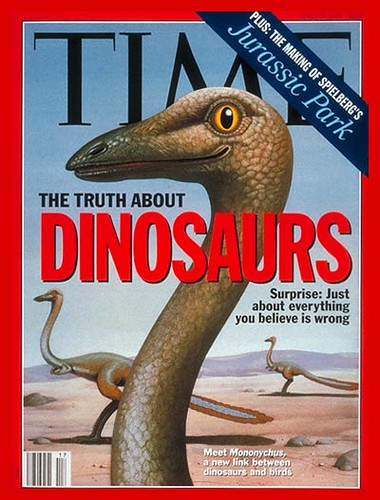
– Science Fiction Prototyping for Technology Innovation –
http://www.creative-science.org/
Presentations (papers) from science and engineering researchers on their own scientific papers/projects depicting how they foresee their research might impact future worlds.
Presentations from science fiction writers depicting aspects of their stories that they feel would be feasible and useful for scientists to try to implement.
Paper submission: 28th March 2011 (via the CS’11 paper story submission system)
Notification of acceptance: 25th April 2011
Paper final submission (with revisions): 9th May 2011
Before 9th May 2011
– Regular Participant or Presenter (all non-students) = £144
– Student Participant or Presenter = £120.00
After 9th May 2011
– All categories = £180
Brian David Johnson (Intel Labs, USA)
Victor Callaghan (University of Essex, UK)
Simon Egerton (Monash University, Malaysia)Art Center Summer Residency: Learning and the New Ecology of Things
Learning and the New Ecology of Things
